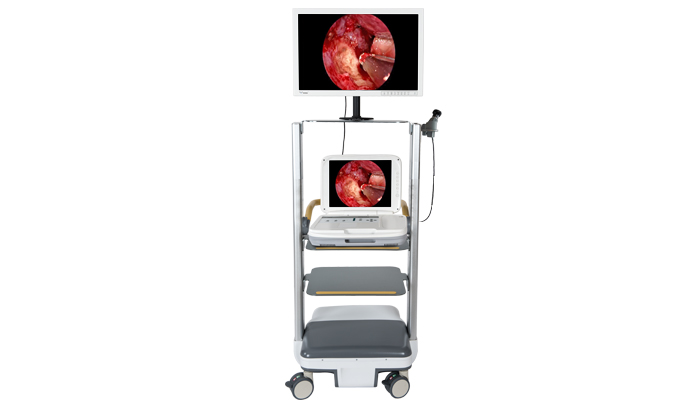With the continuous development and popularization of endoscopy technology, endoscopic imaging systems are more and more widely used in hospitals at all levels, and endoscopic imaging systems have different names when they are used in various clinical departments, such as: ventricular mirror, Thoracoscopy, laparoscopy, hysteroscopy, uretero-nephroscope, resection of the prostate, intervertebral foramoscope, arthroscopy, ENT endoscopy, etc., do you know the composition of the Medical Endoscopic Imaging System? Quickly follow the editor to learn about it.

The composition of medical endoscopic imaging system
The medical endoscopic imaging system is mainly composed of an equipment system and a surgical instrument system. Surgical instrument systems are mainly classified according to the department or the name of the operation. There are endoscopes, special instruments, surgical instruments and disposable surgical consumables used in each department. In the equipment system, we can usually be divided into: equipment imaging system, image recording system, light source system, artificial pneumoperitoneum system, liquid pressurization system, electrocoagulation and electrocutting system, power ablation system, flushing suction system, and so on.
(1) Equipment imaging system:
The system includes a monitor and a camera. There are two types of monitors: conventional CRT and LCD. Cameras have single-chip and 3-chip. Nowadays, most high-end users are LCD monitors with 3-chip devices.
(2) Image recording system:
Nowadays, many hospitals choose computer-based graphic workstations. The system is divided into two parts: computer hardware and graphic acquisition software.
(3) Light source system:
Also known as cold light source. According to the type, it is divided into ordinary halogen light source, xenon light source, and LED light source. The colors of the three light sources are close to daylight, making the eyes feel the image lifelike. With the continuous upgrading of endoscopy technology, halogen lamps have been slowly eliminated at present. Xenon lamps and LED lamps are more commonly used, but xenon lamps have a short life and are often replaced. LED cold light sources have the advantages of small size, long life, and high efficiency. Its luminous life span is as long as 50,000 to 100,000 hours.
(4) Artificial pneumoperitoneum system:
Connect the insufflator to the carbon dioxide cylinder, unscrew the valve on the cylinder, and then turn on the insufflator. According to the needs of the operation, select the preset pressure value. When the intra-abdominal pressure exceeds or falls below the set value, the automatic carbon dioxide insufflator can automatically start or stop gas injection.
(5) Liquid pressurization system:
Systems such as joint pumps, dilatation pumps, and bladder pumps are mainly used to pressurize liquids into a cavity, and then use instruments to perform operations in the cavity.
(6) Electrocoagulation and cutting system:
High-frequency electrocautery is often used in ordinary open surgery and minimally invasive surgery.
(7) Power ablation system:
Power planing systems and ion ablation knives are most commonly used in sinusoscope and arthroscopic surgery. Although these two devices are expensive, they greatly shorten the intraoperative time and reduce the surgical risk.
(8) Flushing suction system:
The flushing flow rate of the equipment should be at least 1L/min.